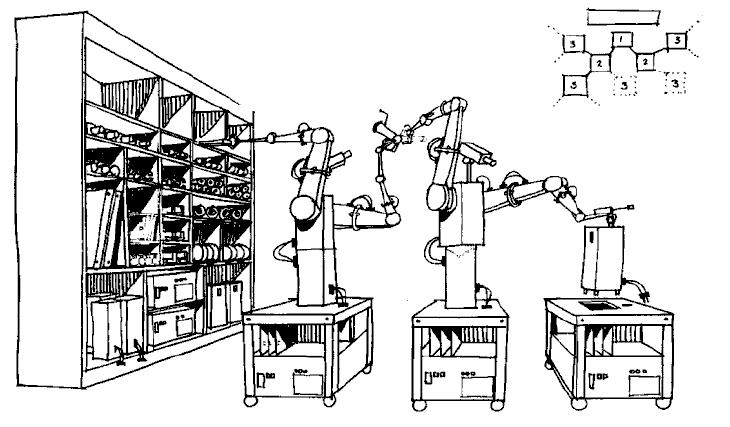Self-replicating Machines

A self-replicating machines can make copies of itself using raw materials taken from the environment. The concept has been linked to replication found in nature. Most self-replicating machines can create their own parts, but still needs to be assembled by human hands. True self-replicating machines would have both the ability to create the parts and assemble them.
Self-Replicating Machines in 3D Printing
Created by Adrian Bowyer, RepRap is a 3D printer. RepRap has a project to provide 3D printers to everyone. The plan is that when someone purchases a RepRap machine, he or she will then print out all the parts, assemble it, and give the newly printed machine to another person. That person would then print out the parts, assemble it, and give it to someone else. This way, everyone could have a copy of the RepRap.
History of Self-Replicating Machines
The first detailed proposal was created by John von Neumann in 1948 and 1949. He proposed a kinematic self-replicating model. Dissatisfied with this model, he went on to create an abstract model based on cellular automata.
In 1956, Edward F. Moore proposed artificial living plants, which are machines that use air, water, and soil for energy. These machines could conceivably be used on the ocean’s surface or in deserts.
Freeman Dyson gave his Vanuxem lecture in 1970 proposing created three types of replicators. One type would be located on Saturn’s moon, Enceladus. The replicators would create space crafts to send ice from Enceladus to Mars to assist in terraforming the planet. The second type would use solar energy in a desert environment, and the third type would help developing countries increase their industrial capacity.
In 1995, Klaus Lackner and Christopher Wendt developed an idea for self-replicating robots that would seed deserts and extract needed chemicals found in desert topsoil as materials for self-replicating.
There are several more innovators regarding self-replicating machines, such as Chris Phoenix, who outlined a hydraulic replicator; Hod Lipson, who received a grant from NASA for Autonomous Self-Extracting Machines for Accelerating Space Exploration; and Adrian Bowyer, who created the RepRap 3D printer.
To learn more about the latest in 3D Printing, check out our 3D printing.